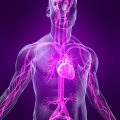Table of Contents
Since POTS may arise from different underlying medical conditions and various contributing factors, treatment can be tricky. Also, since it’s a case-to-case basis kind of condition, its symptoms differ from one patient to another, which means treatment strategies will differ as well.
Though there are no hard and fast rules in treating Postural Orthostatic Tachycardia Syndrome, there are of course, tested and proven ways to alleviate its discomfort and address other common symptoms that comes with it. Also, if POTS comes with an underlying medical condition, such as diseases, treating the disease will usually treat the POTs as well.
Though doctors may prescribe prescription medications, experts say the most effective way to treat POTS is through long term lifestyle changes, such as balanced diet, exercise, and better fluid intake. Also, in some cases, these lifestyle driven treatment strategies can be supplemented with various medications.
POTS Treatments That Don’t Require Medication
These are simple, non-drug, but effective measures that can significantly improve the quality of life of anyone suffering from POTS. The evidence on the efficacy of these methods are proven to be effective and helpful by doctors themselves, which they often advise as part of a more comprehensive treatment plan for their patients.
Regular Exercise
We all know the benefits of exercise for overall health, and since exercise help promote better blood circulation and oxygen distribution throughout our body, doctors recommend exercise for POTS patients. Initially though, most POTS patients either can’t imagine doing physical activities, due to excessive increase of heart rate. The key however, is to start slowly, and doesn’t have to be rigorous and exhausting. Have a strong foundation of sound and healthy body by doing exercises regularly.
Muscle Tensioning
People suffering from POTS will have pools of blood on their leg when standing, unable to circulate. To alleviate this symptom, you can tense your leg muscles to promote better blood circulation and orthostatic intolerance.
Balanced Diet
Balanced diet is important for overall health, and for POTS patients, getting the right nutrition minus the triggers such as alcohol, caffeine, and energy drinks can significantly improve symptoms of Postural Orthostatic Tachycardia Syndrome. Experts recommend smaller sized meals and lowering carbohydrates. Also, those with GI symptoms should consider their intolerance to dairy products and gluten. Experts recommend trial of avoidance to find out exactly which food contributes to POTS episodes.
Increase Your Fluid Intake
Doctors often recommend drinking 8 glasses of water a day. If you have POTS however, you need to up that number a little bit. Or better yet, drink a couple of glass after a few minutes. This will help improve blood pressure and alleviate any symptoms that are bothering you.
Routine Changes
Most often than not, POTS symptoms are at their worse in the morning. Thus, doctors advise their patients to reschedule their events later in the afternoon.
When showering, it may be helpful to sit down. When feeling dizzy or starting to faint, find a good spot to lie down and elevate your legs. This is crucial to minimize the risk of trauma.
Lastly, it is very important to get enough sleep day in and day out. Set a regular sleep time as well to avoid napping in the morning.






 I love to write medical education books. My books are written for everyone in an easy to read and understandable style.
I love to write medical education books. My books are written for everyone in an easy to read and understandable style.